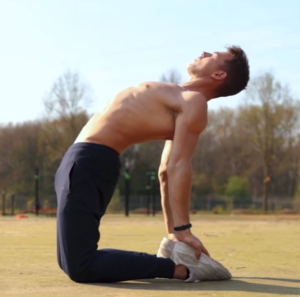In today’s fast-paced tech-driven world, it has become more important than ever to take care of our physical health. Many individuals spend hours sitting in front of computers or hunched over smartphones, leading to poor posture and tight muscles. Incorporating flexibility training into our lives can help counteract these negative effects and promote overall well-being.
Understanding Calisthenics
Calisthenics refers to a form of exercise that uses bodyweight movements, requiring little to no equipment. It focuses on improving strength, flexibility, and body control. Calisthenics exercises, such as push-ups, squats, and planks, engage multiple muscle groups simultaneously, promoting functional strength and conditioning.
The Synergy of Calisthenics and Flexibility
Calisthenics and flexibility training go hand in hand, providing a comprehensive fitness approach. Flexibility exercises help prepare the body for calisthenics movements by elongating muscles and increasing range of motion. When combined with calisthenics, flexibility training enhances exercise performance, reduces the risk of injury, and improves overall flexibility and mobility.
The Benefits of Calisthenics and Flexibility Training
1. Improved Posture: Slouching over devices for extended periods can lead to poor posture. Calisthenics and flexibility exercises strengthen the muscles necessary for good posture, helping combat the negative effects of extended screen time.
2. Increased Muscle Definition: Calisthenics build lean muscle mass, while flexibility training elongates muscles, resulting in improved muscle definition. This combination creates a toned and athletic physique.
3. Enhanced Joint Health: The controlled, full-range movements in calisthenics, combined with flexibility exercises, improve joint health by increasing lubrication and reducing the risk of injuries related to stiffness or limited mobility.
4. Improved Athletic Performance: Calisthenics and flexibility training enhance overall athleticism. Increased strength, agility, and mobility gained through this combination improve performance in various physical activities and sports.
5. Core Stability and Balance: Calisthenics exercises require significant core engagement. Combining these exercises with flexibility training improves core stability and balance, reducing the risk of falls and injuries.
How to Incorporate Calisthenics and Flexibility into Your Routine
1. Warm-up: Begin your workout with dynamic stretches and mobility exercises tailored to the muscle groups you will be targeting during calisthenics. This helps increase blood flow and prepare the body for movement.
2. Calisthenics Circuit: Perform a series of bodyweight exercises targeting different muscle groups. Aim for a combination of strength-building movements and exercises that promote flexibility, such as lunges or yoga-inspired flows.
3. Flexibility Training: After your calisthenics session, dedicate time to static stretches and lengthening exercises. Focus on the muscle groups involved in your workout, holding each stretch for 15-30 seconds.
4. Recovery and Rest: Allow adequate time for rest and recovery between calisthenics and flexibility training sessions to prevent overtraining and support muscle growth.
In Conclusion
Calisthenics and flexibility training complement each other perfectly, offering numerous benefits to individuals in the tech era. By incorporating these exercises into your routine, you can enhance your overall physical well-being, boost performance, and prevent the negative effects of prolonged sitting and repetitive tech-related movements. Embrace the perfect combination of calisthenics and flexibility and unlock your full potential in the realm of physical fitness.
